..and even moreAthens Sightseeing
Sunday July 25. Dare I say, likely to be the last day we'll have off form work for a while. Forget what I'd said
before about it being dry here. The wind has changed, and this weekend when it hit the mid-90's, or the mid-30's Celsius,
which is how they do temperatures here, IT FELT IT! But a day off is still a day off, so I took the 9:15 shuttle bus
from the hotel down to Syntagma Square again, near Parliament, and headed for Philopappos Hill
to get another view of the Acropolis. On the way, from Dionyssiou Aeropagitou, a pedestrian walkway skirting
the south side of the Acropolis, I took this through the bars of the fence that surrounds the site.....
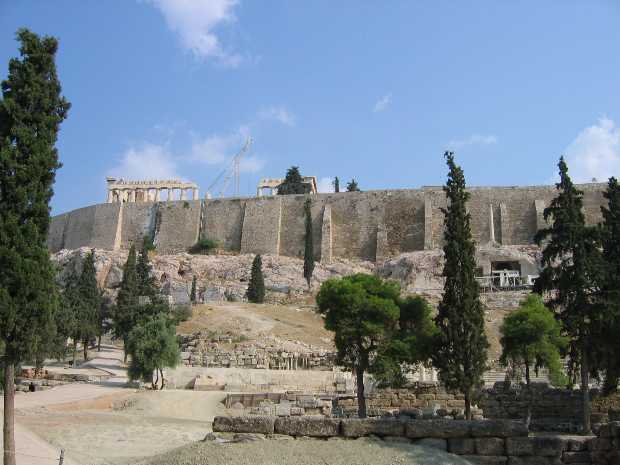
What's different this week is that there is now a crane sticking up above the Parthenon. Last week the crane was inside
the Parthenon, on large blocks.
The view from near the top of Philopappos Hill, which faces the Acropolis (that's Lycabettus Hill in the background--last week's hike)
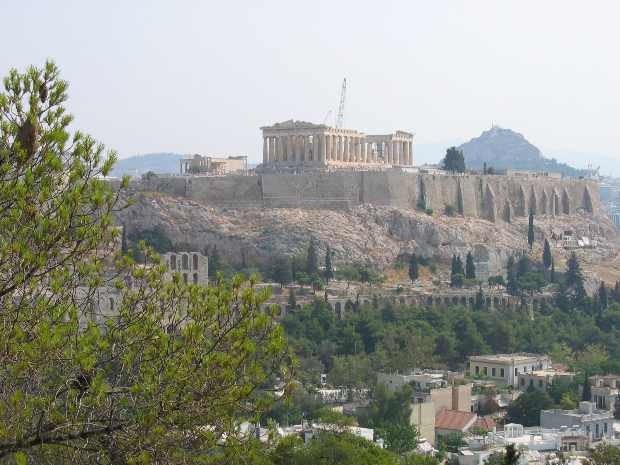
Topping Philopappos Hill is this funeral monument of Philopappus, a Roman consul of the 2nd century AD. Near this site is believed
to have been the prison of Socrates, and the place where he drank his fatal dose of hemlock. Today, the heat's just about killing me!
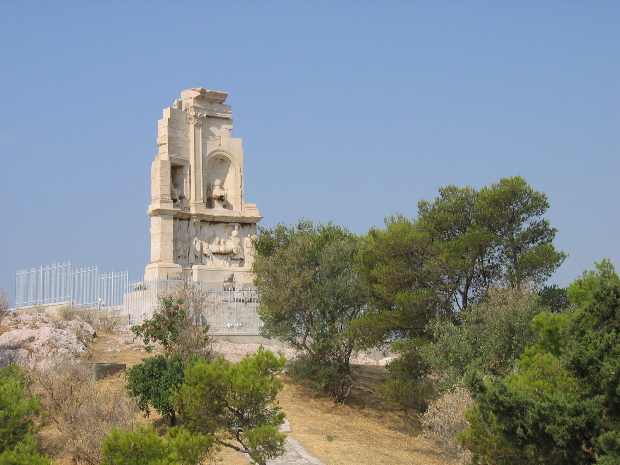
This is Mars Hill, just below the entrance to the Acropolis. This rocky hill was the Supreme Court, the Areopagus, of ancient Athens.
One of the court's responsibilities was to pass judgement on new religons brought to the city by foreigners. In about 52 AD, St. Paul addressed
the Athenians here on the basic principles of the newly founded religion of Christianity. A plaque, at right in this picture and up close further below,
has an excerpt of his preaching. In Greek, of course. The hand carved rock stairs leading to the top of Mars Hill, and indeed Mars Hill itself,
is extremely slippery due to over 25 centuries of foot traffic.
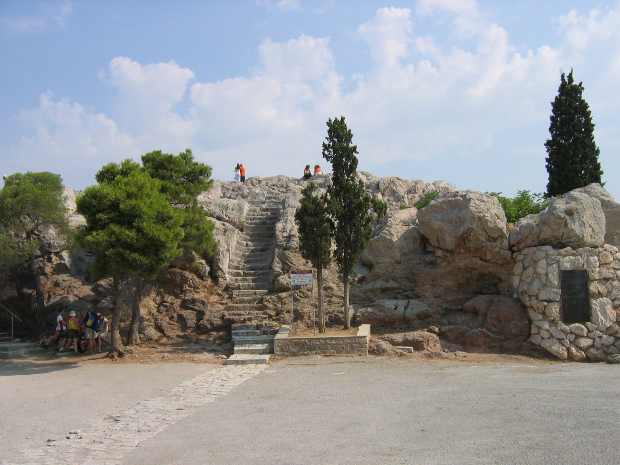
Below--it's Greek to me--the plaque at Mars Hill
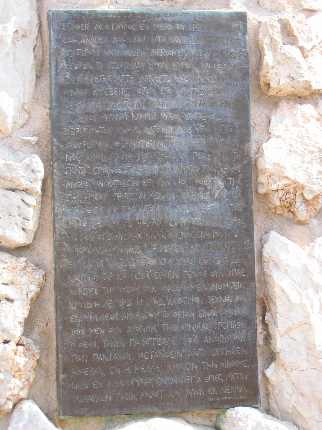
Turning to my right from the plaque, this is the approach to the Acropolis; that's the Propylaea that the tourists pass through first, with all of the scaffolding.
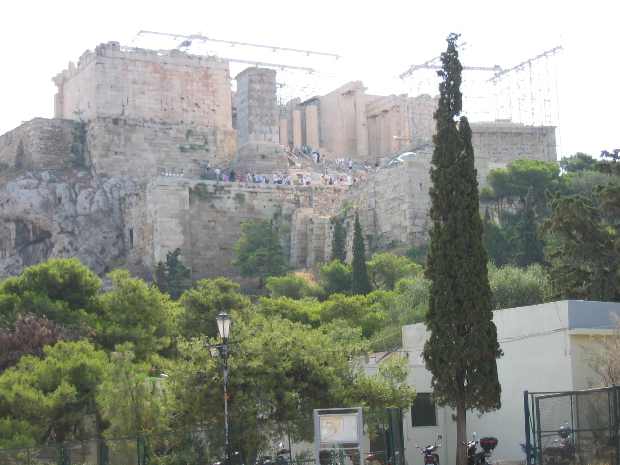
Now back down in the Monastiraki below the Acropolis, these ruins are part of the old Roman Agora. They include, in the center of this photo, the entrance to Hadrian's Library, built (you'll recall from the trip last weekend) by the Roman ruler in the 2nd century AD.
Did I mention that the library was destroyed by the barbarian race of the Herulians in 267, and repaired by the Roman prefect Herculios from 407-412.
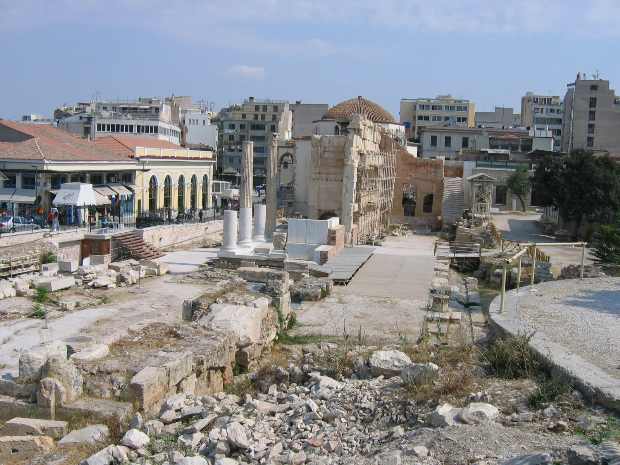

This plaque tells the whole story, and has a rendering of what once was the library. The entrance was on the right.
Below, about a block away from Hadrian's place is more of the Roman market, featuring this, the Tower of the Winds, also known as
the Orologio (clock) of Andronicus Kyrristou, from the 1st century BC. Fairly well preserved, it's made of marble from Penteli,
and features engravings at the top of each of its 8 sides.
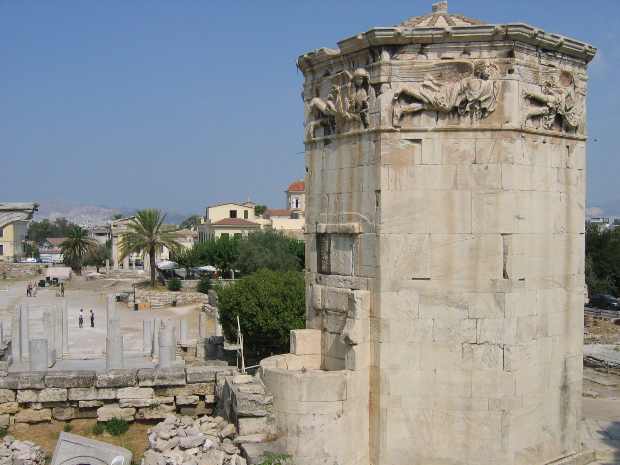
Below are a couple more shots from the market, showing the surroundings and, in the second photo below, a collection of column bases
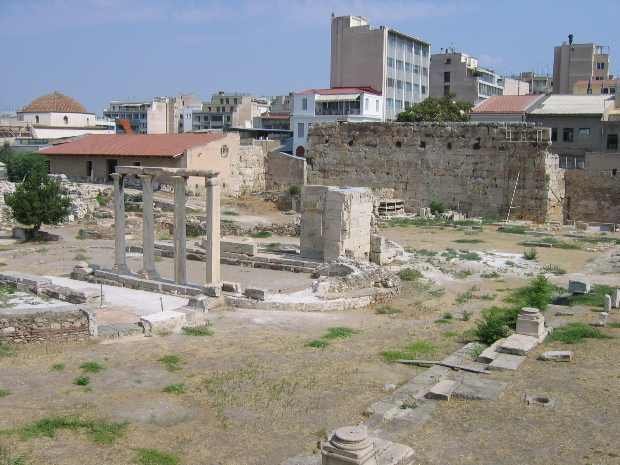
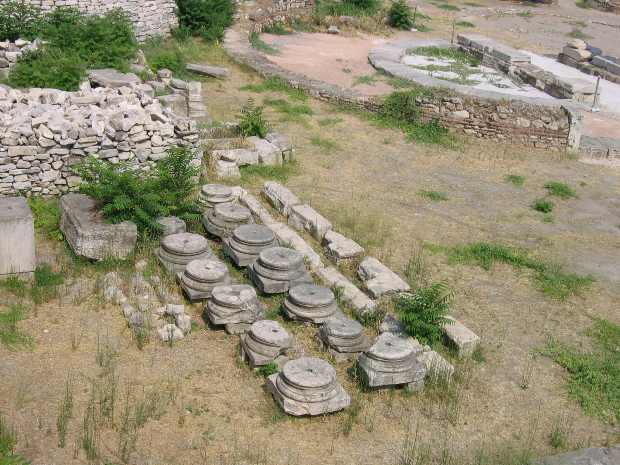
This is a contrast. In the foreground, some ruins, then, the tracks and train of the Athens Metro, above ground right here adjacent to Monastiraki Station.
But, just on the other side of the tracks are more ruins, the Ancient Agora, with its museum at left, and in the distance, the Acropolis.
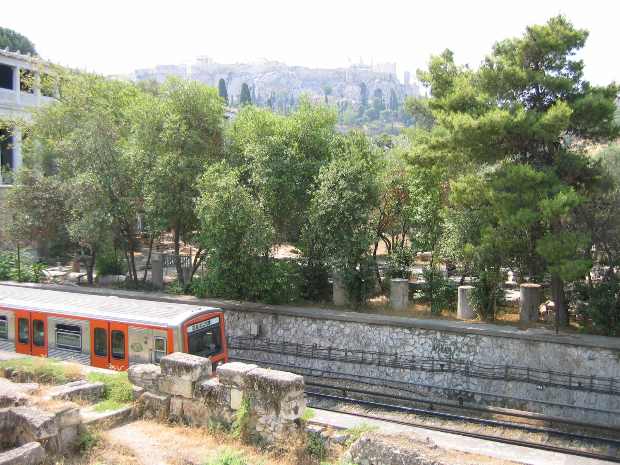
Meanwhile, not very far away, this extensive flea market goes on 7 days a week, but closes each day by 3 PM. See anything you want?
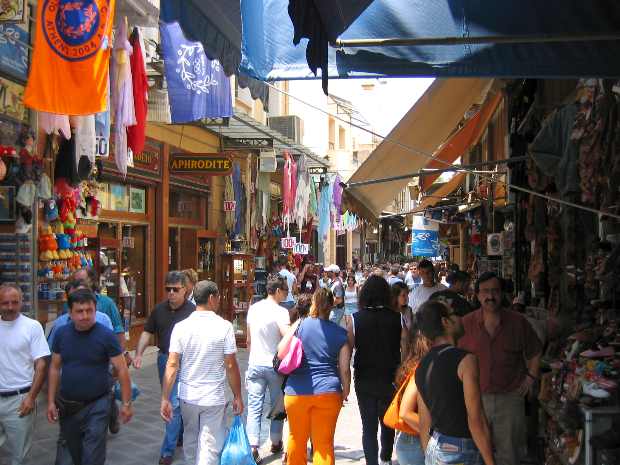
Finally, Monday night, I had dinner down the block from the Marriott with Don & Loris Garrison, along with Mary Grusca from our Comms group.
Don was one of the first of our group on site, arriving in early June. His last day (getting here early has its rewards) was July 14th, but he and
his wife took a couple of tours, first by boat, visiting the islands of Greece, then by bus. Just one last Greek meal before they headed back home to Lincoln, NE.

That's it for this time.
Click to go back to Jeff's Athens Homepage
or click here to go to the next page.